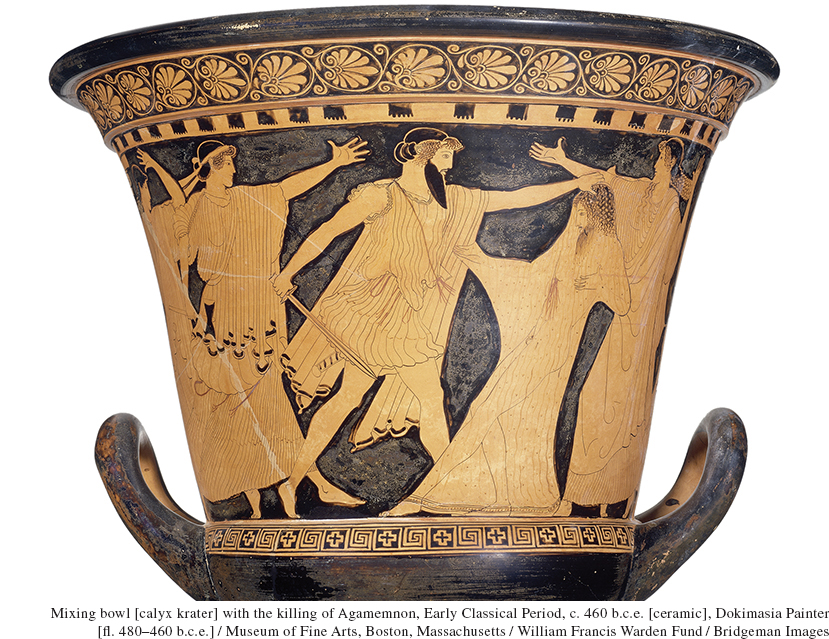
Greek Vase Painting of the Murder of King Agamemnon
This Greek vase from the fifth century B.C.E. shows Queen Clytemnestra (left) and her lover Aegisthus murdering her husband, King Agamemnon, after he returns home from leading the Greek army in its ten-year war against Troy. The painting shows Agamemnon as defenseless because he was ensnared in a gauzy robe that his wife gave him after he took a bath. The other side of the vase shows Agamemnon’s son murdering Clytemnestra, his mother, in revenge. Greek mythology had many stories of murderous vengeance that emphasized how difficult it was to regulate human passions with social norms and laws. (Mixing bowl [calyx krater] with the killing of Agamemnon, Early Classical Period, c. 460 B.C.E. [ceramic], Dokimasia Painter [fl. 480–460 B.C.E.] / Museum of Fine Arts, Boston, Massachusetts / William Francis Warden Fund / Bridgeman Images.)